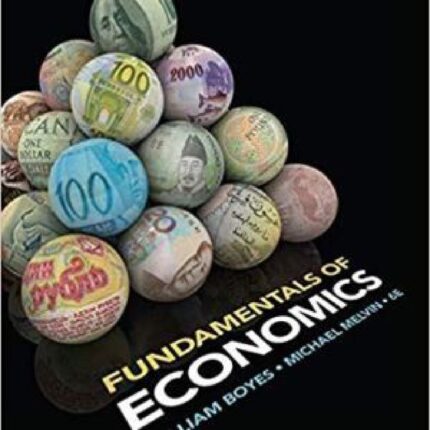Overview
Chapter 11
Pricing with Market Power
11.1 Capturing Consumer Surplus
1) Which of the following strategies are used by business firms to capture consumer surplus?
A) Price discrimination
B) Bundling
C) Two-part tariffs
D) all of the above
Answer: D
Diff: 1
Section: 11.1
2) Rather than charging a single price to all customers, a firm charges a higher price to men and a lower price to women. By engaging in this practice, the firm:
A) is trying to reduce its costs and therefore increase its profit.
B) is engaging in an illegal activity that is prohibited by the Sherman Antitrust Act.
C) is attempting to convert producer surplus into consumer surplus.
D) is attempting to convert consumer surplus into producer surplus.
E) Both A and C are correct.
Answer: D
Diff: 1
Section: 11.1
3) Suppose a firm has market power and faces a downward sloping demand curve for its product, and its marginal cost curve is upward sloping. If the firm reduces its price, then:
A) consumer and producer surplus must increase.
B) consumer surplus increases, producer surplus may increase or decrease.
C) consumer surplus increases, producer surplus must decline.
D) consumer and producer surplus must decline.
Answer: B
Diff: 2
Section: 11.1
4) Suppose a firm has market power and faces a downward sloping demand curve for its product, and its marginal cost curve is upward sloping. If the firm reduces its price, then:
A) producer surplus increases due to new buyers, but the producer surplus from existing customers declines due to the lower price.
B) the change in producer surplus is transferred to consumers.
C) the increase in consumer surplus is only due to the increase in quantity demanded.
D) the sum of producer and consumer surplus remains the same, but surplus value is transferred from the producer to consumers.
Answer: A
Diff: 2
Section: 11.1
11.2 Price Discrimination
1) An electric power company uses block pricing for electricity sales. Block pricing is an example of
A) first-degree price discrimination.
B) second-degree price discrimination.
C) third-degree price discrimination.
D) Block pricing is not a type of price discrimination.
Answer: B
Diff: 1
Section: 11.2
2) When a firm charges each customer the maximum price that the customer is willing to pay, the firm
A) engages in a discrete pricing strategy.
B) charges the average reservation price.
C) engages in second-degree price discrimination.
D) engages in first-degree price discrimination.
Answer: D
Diff: 1
Section: 11.2
3) The maximum price that a consumer is willing to pay for each unit bought is the ________ price.
A) market
B) reservation
C) consumer surplus
D) auction
E) choke
Answer: B
Diff: 1
Section: 11.2
4) Second-degree price discrimination is the practice of charging
A) the reservation price to each customer.
B) different prices for different quantity blocks of the same good or service.
C) different groups of customers different prices for the same products.
D) each customer the maximum price that he or she is willing to pay.
Answer: B
Diff: 1
Section: 11.2
5) A firm is charging a different price for each unit purchased by a consumer. This is called
A) first-degree price discrimination.
B) second-degree price discrimination.
C) third-degree price discrimination.
D) fourth-degree price discrimination.
E) fifth-degree price discrimination.
Answer: A
Diff: 1
Section: 11.2
6) A tennis pro charges $15 per hour for tennis lessons for children and $30 per hour for tennis lessons for adults. The tennis pro is practicing
A) first-degree price discrimination.
B) second-degree price discrimination.
C) third-degree price discrimination.
D) fourth-degree price discrimination.
E) fifth-degree price discrimination.
Answer: C
Diff: 1
Section: 11.2
7) Discrimination based upon the quantity consumed is referred to as ________ price discrimination.
A) first-degree
B) second-degree
C) third-degree
D) group
Answer: B
Diff: 1
Section: 11.2
8) A doctor charges two different prices for medical services, and the price level depends on the patients’ income such that wealthy patients are charged more than poorer ones. This pricing scheme represents a form of
A) first-degree price discrimination.
B) second-degree price discrimination.
C) third-degree price discrimination.
D) pricing at each consumer’s reservation price.
Answer: C
Diff: 1
Section: 11.2
9) Third-degree price discrimination involves
A) charging each consumer the same two part tariff.
B) charging lower prices the greater the quantity purchased.
C) the use of increasing block rate pricing.
D) charging different prices to different groups based upon differences in elasticity of demand.
Answer: D
Diff: 1
Section: 11.2
10) The maximum price that a consumer is willing to pay for a good is called:
A) the reservation price.
B) the market price.
C) the first-degree price.
D) the block price.
E) the choke price.
Answer: A
Diff: 1
Section: 11.2













Reviews
There are no reviews yet.